Challenges of Sporadic Health Monitoring in Aging Populations

Understanding the Challenges in Sporadic Health Data Collection for Older Adults
As the global population ages rapidly, healthcare systems face unprecedented pressures to provide continuous, effective health monitoring. This article explores the multifaceted challenges faced in implementing and managing sporadic health monitoring systems for the elderly, highlighting systemic, technological, operational, and social barriers. It further examines innovative approaches and future directions necessary to surmount these hurdles, ensuring sustainable and equitable healthcare for aging populations.
The Demographic Shift and Healthcare Demand Surge
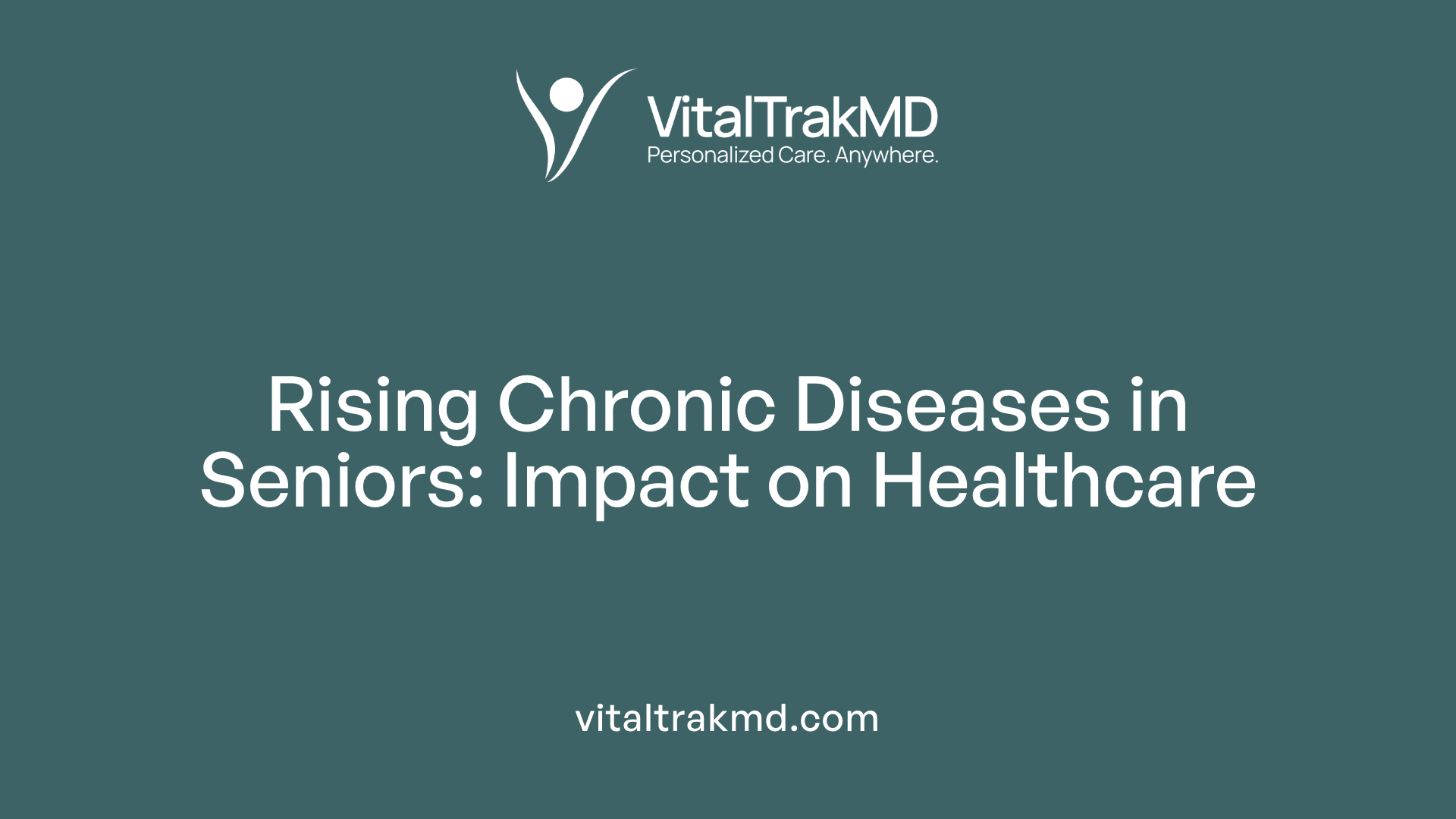
How do aging populations impact healthcare service demands and resource allocation?
The global increase in older adults has a profound effect on healthcare systems worldwide. As populations age, the prevalence of chronic diseases such as hypertension, arthritis, heart disease, diabetes, and dementia rises sharply. For instance, approximately 88% of seniors live with at least one chronic condition, and many have multiple, which substantially increases healthcare utilization.
This trend leads to a surge in demand for various healthcare services, including ongoing disease management, long-term care, and specialized elderly care. In the United States, by 2030, all baby boomers will be over 65, making one in five residents of retirement age. The number of people over 85 is projected to triple by 2050, approaching 17.3 million, often with complex health needs.
The increased demand strains existing healthcare infrastructure, from primary care to hospitals. Workforce shortages are also pressing, with predictions of up to 139,000 fewer physicians and significant gaps in nursing staff by 2033, especially impacting rural and underserved regions. This gap complicates access and quality of care.
To meet these challenges, healthcare systems are adopting innovative strategies such as integrated care models, health information technologies, and telemonitoring tools. These efforts aim to improve efficiency, reduce costs, and ensure equitable care. Addressing socioeconomic disparities and barriers to access remains crucial because older individuals often face issues related to affordability and service availability.
Overall, the aging demographic trend necessitates strategic planning, policy adjustments, and resource reallocation to sustain quality healthcare delivery. It emphasizes the importance of preventive care, technology adoption, and workforce development to support the growing needs of an aging population.
Systemic Challenges in Health Monitoring Deployment
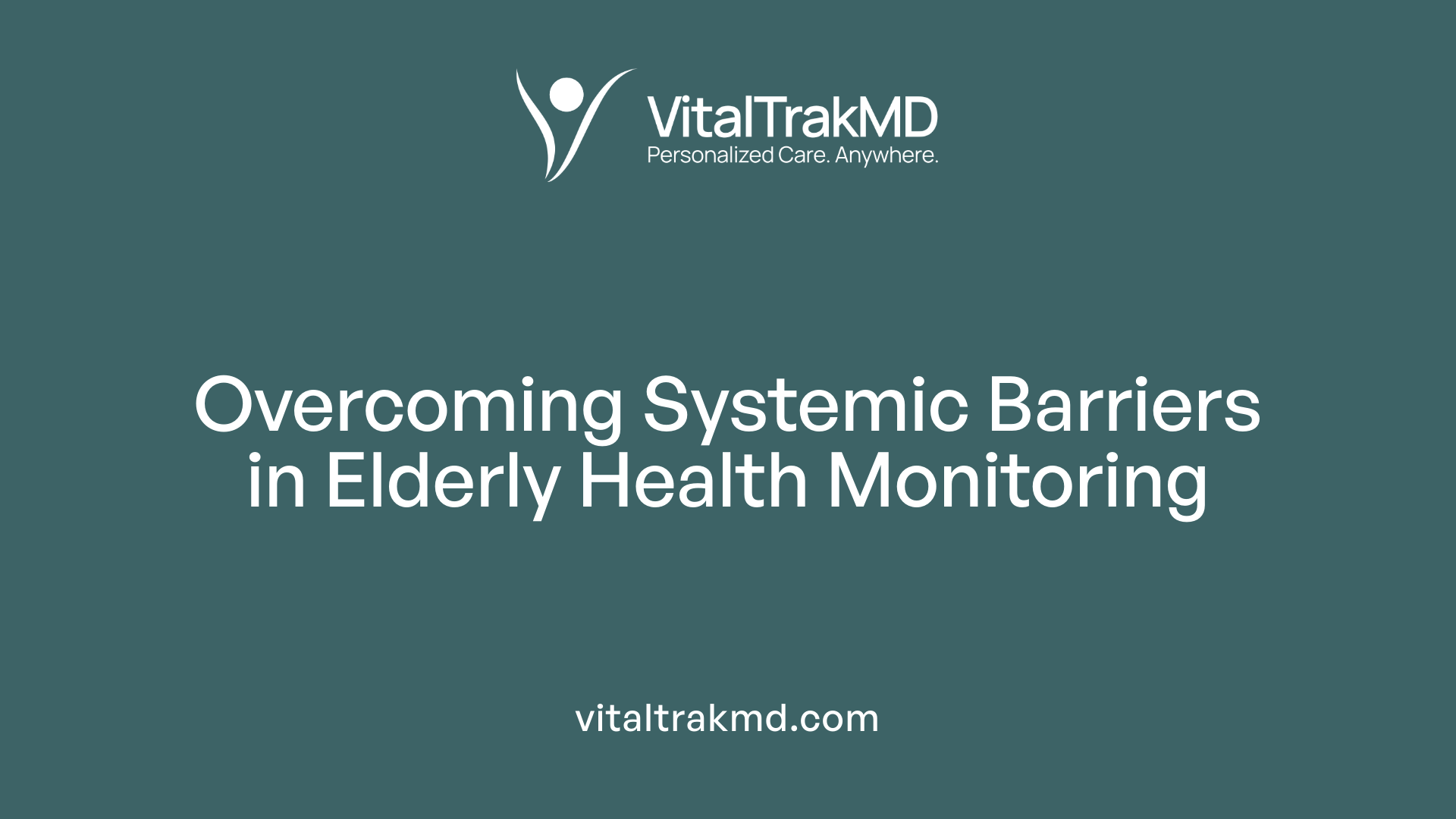
What are the systemic challenges in implementing and managing health monitoring systems for aging populations?
Deploying health monitoring systems for the elderly involves tackling multiple systemic hurdles. One of the primary issues is infrastructure limitations. Many regions, especially rural or underserved areas, suffer from poor internet connectivity and inadequate technological infrastructure, which can severely restrict the effectiveness of remote monitoring solutions.
Standardization remains another significant barrier. The lack of universal policies and standards complicates the integration of various devices and systems, leading to interoperability issues. Without cohesive standards, data exchange between devices and healthcare records becomes fragmented, risking inaccuracies and reducing system reliability.
Technological barriers also pose substantial challenges. Older adults often face difficulties due to low digital literacy, physical impairments, or cognitive limitations that make using complex devices or interfaces problematic. Usability issues, such as non-intuitive designs or intrusive hardware, can discourage adoption.
Privacy and security concerns further complicate deployment. The sensitive nature of health data raises fears about data breaches and unauthorized access, which can hinder acceptance among users and providers alike.
Financial constraints are critical as well. High initial costs for devices, maintenance, and infrastructure upgrades, combined with inconsistent insurance coverage, limit access, especially for lower-income or uninsured populations.
Organizational and workforce challenges include a shortage of trained healthcare personnel capable of managing and interpreting continuous health data. Additionally, existing healthcare systems often lack the processes to incorporate new technologies effectively.
Managing these challenges necessitates a comprehensive approach that emphasizes user-centered design, policy support, and technological flexibility. Developing standardized protocols, improving infrastructure, training healthcare workers, and addressing privacy issues are essential steps to facilitate the successful deployment of health monitoring systems for aging populations.
| Challenge Type | Examples | Impact | Potential Solutions |
|---|---|---|---|
| Infrastructure | Connectivity issues in rural areas | Limits data transmission | Expand broadband access, employ offline-capable devices |
| Policy & Standards | Lack of interoperability standards | Fragmented systems | Establish universal standards like HL7 or FHIR |
| Human Factors | Low digital literacy, physical impairments | Reduced usability | User-centered, accessible device designs |
| Privacy & Security | Data breaches, unauthorized access | Reduced trust | Implement strict security protocols and data encryption |
| Financial | High costs, coverage gaps | Limited access | Subsidies, insurance integration, cost-effective devices |
| Workforce | Shortage of trained personnel | Insufficient data management | Healthcare staff training programs |
Addressing these issues is critical to creating effective, inclusive, and sustainable health monitoring solutions for the growing elderly population.
The Role and Limitations of Wearables and Digital Technologies
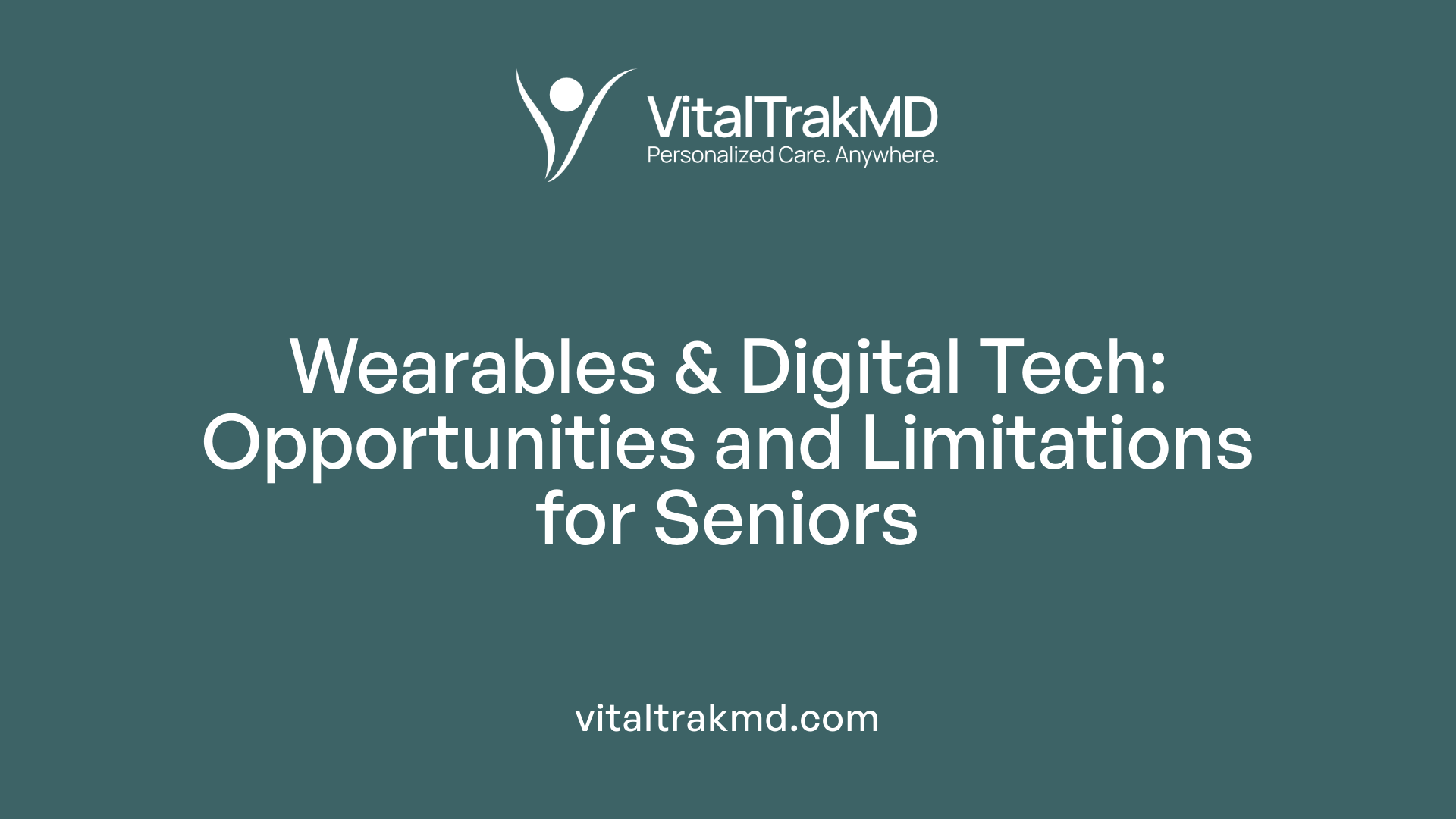
What are the barriers and limitations of digital health technologies and wearable devices for elderly health monitoring?
Digital health innovations, particularly wearable devices, hold great promise for supporting aging populations. They enable continuous health monitoring, early detection of health issues, and promote independent living. However, several barriers limit their widespread adoption and effectiveness among the elderly.
One significant challenge is technological complexity. Many older adults find wearable devices difficult to operate due to complex interfaces, small screens, or complicated setup procedures. This often leads to low usability and decreased willingness to use such devices over time. Moreover, the high costs associated with these technologies can be prohibitive, especially for individuals on fixed incomes. The initial investment, ongoing maintenance, and data plan expenses create financial barriers that limit accessibility.
Data quality issues also pose a concern. Sensor variability and the absence of standardized measurement protocols can lead to inconsistent or inaccurate health data. For example, different devices may produce divergent readings for the same physiological parameter, reducing trust in the technology. Additionally, many devices lack sufficient contextual information, such as environmental factors or user behavior, which are essential for accurate health assessment.
Interoperability challenges further restrict the utility of wearable technologies. Many devices operate in silos, using proprietary data formats and incompatible platforms. This fragmentation makes it difficult to integrate data from multiple sources into electronic health records or health management systems. Consequently, clinicians may face difficulties in validating and interpreting data, reducing the overall effectiveness of remote monitoring interventions.
Accessibility disparities and the digital divide exacerbate existing health inequalities. Marginalized groups, including those in rural areas or with lower socioeconomic status, often have limited access to advanced digital tools. This digital inequality means that the benefits of wearable health technologies are not evenly distributed, potentially widening health disparities.
Psychological factors such as perceived usability, comfort, and attitudes toward technology heavily influence device acceptance. Many seniors feel uncomfortable wearing devices that are intrusive or feel stigmatizing. Concerns about privacy and data security also contribute to resistance, especially when there is fear of unauthorized data access or misuse.
In summary, while wearable devices and digital health technologies offer valuable opportunities for elderly care, their limitations—technological complexity, cost, data quality issues, interoperability hurdles, and socio-psychological barriers—must be systematically addressed. Innovations in user-centered design, standardization, affordable pricing, and privacy safeguards are crucial to overcoming these obstacles and expanding the reach of digital health in aging populations.
Adoption Hurdles for Remote and Intermittent Monitoring Solutions
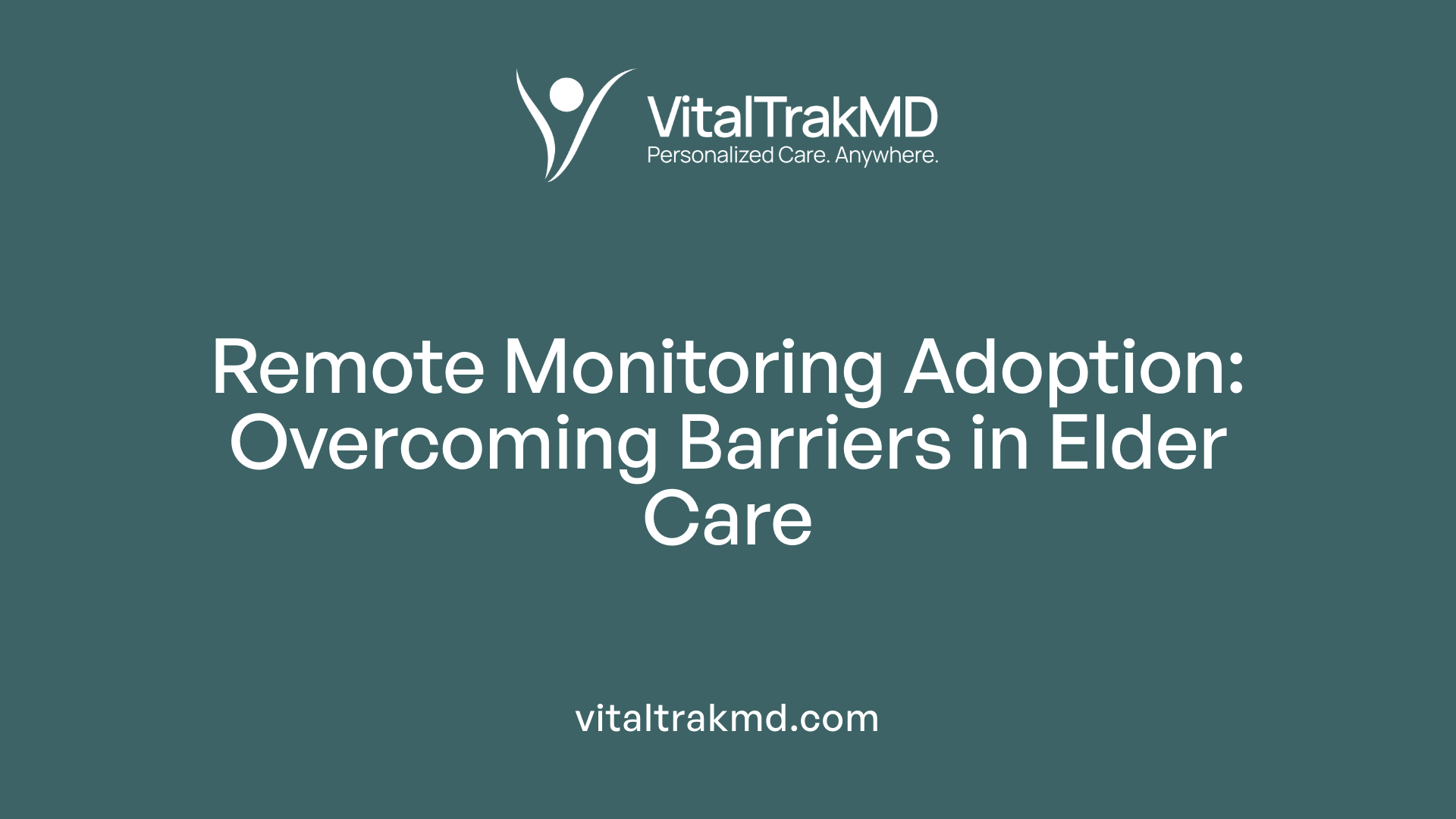
What are the main obstacles in adopting remote and intermittent health monitoring solutions for elderly care?
The implementation of remote health monitoring technologies for older adults faces several significant challenges. These obstacles can be broadly categorized into technological, human, and systemic issues.
From a technological perspective, many elderly individuals encounter difficulties related to usability. Sensory impairments such as poor vision or hearing, as well as cognitive and motor impairments, make it harder for them to operate complex devices or interfaces independently. Devices that are not designed with simplicity in mind can lead to frustration and low adoption rates.
Trust in technology and data accuracy are also critical concerns. Older adults and their caregivers often worry about whether the data collected by wearables and sensors truly reflect their health status. If they question the reliability of these devices, their willingness to use them diminishes.
Furthermore, integrating new health monitoring systems with existing healthcare records proves challenging. Data integration issues can result in fragmented information, inconsistent health records, and increased workload for healthcare providers. This complexity can slow down workflow and reduce the perceived utility of monitoring solutions.
Privacy and security concerns compound these problems. Fear of unauthorized data access or misuse discourages some elderly users from embracing digital health tools. High costs tied to device purchase, maintenance, and data plans further restrict access, particularly for low-income groups.
On the human side, resistance to adopting new technologies is common among older adults. Reasons include fear of technology, feelings of inadequacy, and social factors such as stigma or peer perceptions.
To address these challenges, developers and healthcare systems need to focus on creating user-friendly, affordable, and secure devices. Educating elderly users, providing technical support, and ensuring privacy safeguards are essential steps. Fostering trust and demonstrating tangible health benefits can significantly improve engagement, making remote monitoring a more viable and effective option for senior care.
Technical and Clinical Challenges in Elderly Health Tech
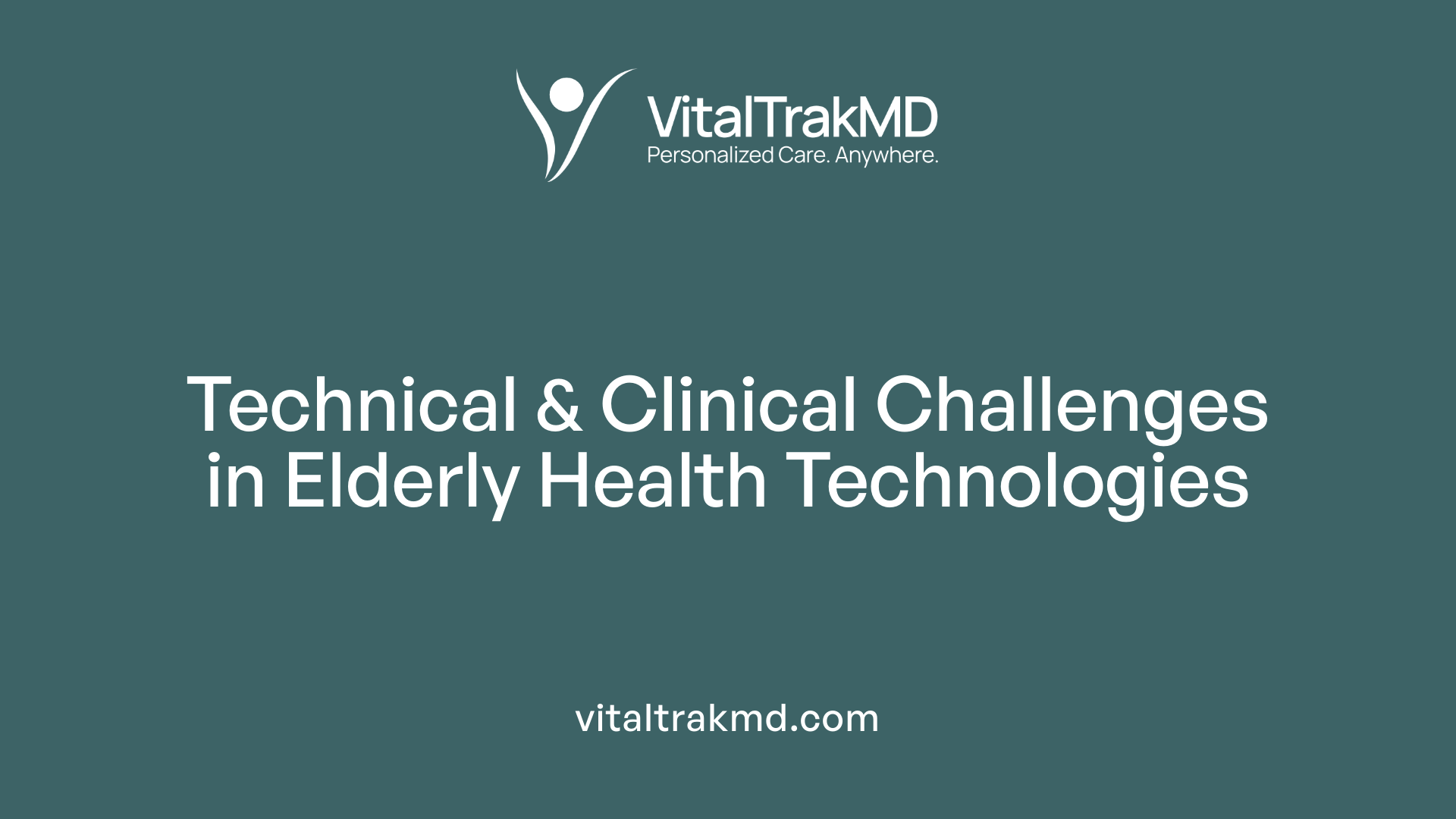
What are the technical, clinical, and operational challenges faced in health monitoring technologies for elderly individuals?
Implementing health monitoring technologies for older adults presents several hurdles. Technically, ensuring device reliability is crucial; devices must consistently function without frequent malfunctions or inaccuracies to build trust and be effective. Accuracy in measurement is equally vital, as imprecise data can lead to incorrect health assessments or missed emergencies. Devices should also be user-friendly, especially given possible physical and cognitive limitations of elderly users, and must seamlessly integrate with existing healthcare systems through interoperability standards.
Clinicians face challenges in verifying the validity of data collected remotely. Achieving precise, clinically meaningful measurements requires careful calibration and validation of sensors and devices. False alarms or missed alerts due to measurement errors can compromise patient safety and reduce confidence in the technology. Moreover, integrating the influx of data into healthcare workflows should facilitate timely decision-making without overwhelming healthcare providers.
Operational barriers include usability issues like complicated interfaces, high costs of devices, and limited access, particularly in rural or underserved communities. Elderly individuals often struggle with digital literacy, making training and ongoing support essential. Privacy and data security also pose significant concerns; safeguarding sensitive health data against breaches is critical to maintain user trust.
Beyond technology, behavioral and social factors influence adoption. Some older adults may distrust new devices or feel stigmatized by using health monitoring tech. Support from caregivers and healthcare providers is essential to motivate usage and ensure adherence.
Addressing these challenges requires a multifaceted approach—designing reliable, accurate, and easy-to-use devices; ensuring system interoperability; implementing strong data security measures; and providing education and support to seniors and clinicians alike. Such comprehensive efforts can significantly improve the quality of elderly care through technological innovation.
Future Research and Innovation Strategies
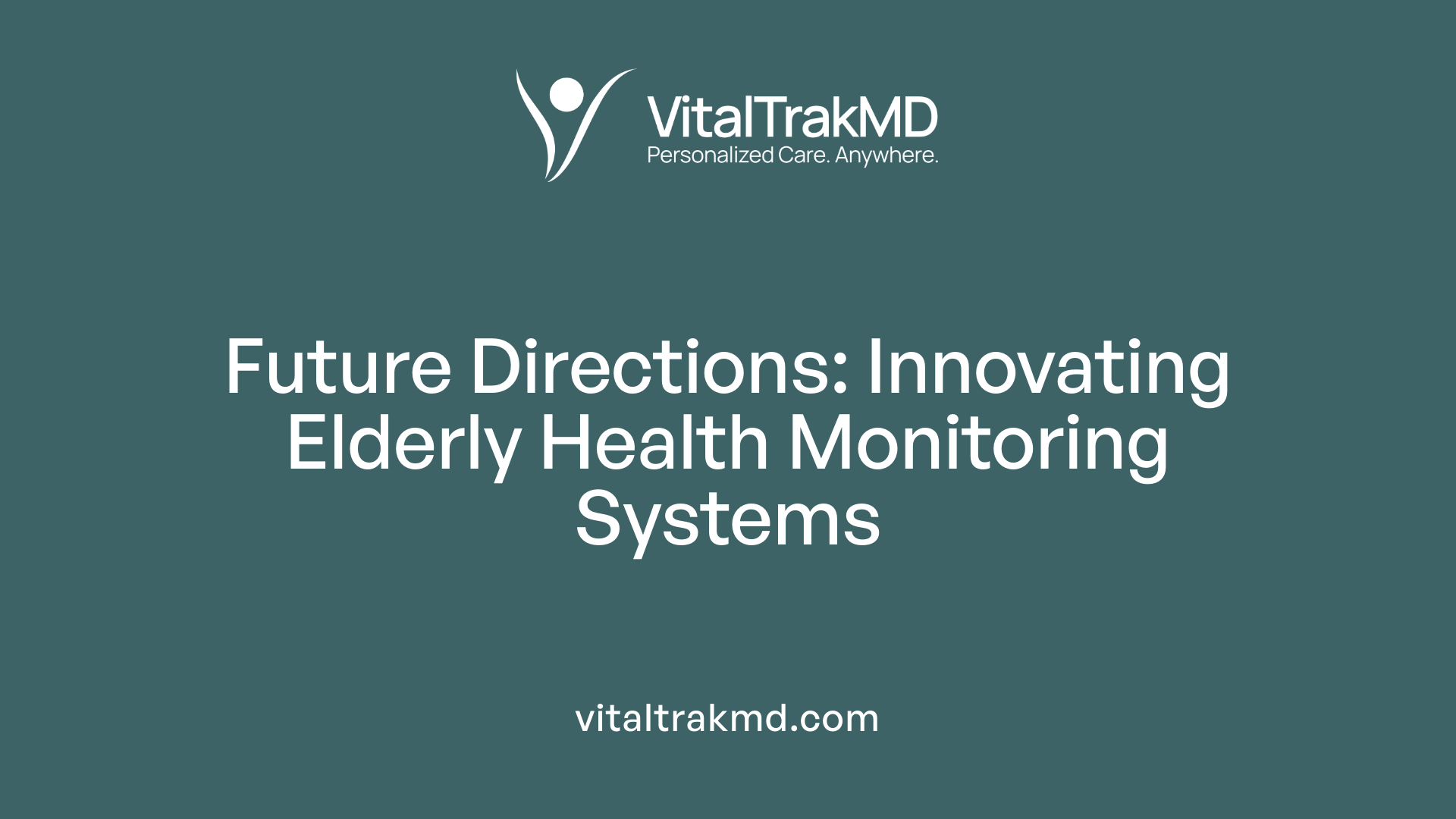
What are the future research directions and strategies to overcome challenges in age-related health monitoring systems?
Advancing the field of elderly health monitoring involves embracing emerging technologies that can transform care delivery. Future research should focus on integrating artificial intelligence (AI), Internet of Things (IoT), and big data analytics into comprehensive, adaptive systems that support early detection and personalized interventions for older adults.
One promising direction is the development of user-friendly and accessible devices. These might include wearable sensors, smart home systems, and intuitive digital health platforms that cater to the physical and cognitive limitations often encountered in aging populations. Such innovations aim to promote independence, safety, and proactive health management, while addressing existing barriers related to usability and adoption.
Another critical area is the creation of centralized, lifetime health records that unify medical, genetic, and social data. This holistic approach allows for tailored healthcare strategies, predictive analytics, and continuous monitoring that adapt over time. Enhancing data integration and interoperability across health systems and devices will enable more effective care coordination.
Policy and multi-sector collaborations will play vital roles in overcoming digital divides and ensuring equitable access to these innovations. Governments, industry, healthcare providers, and community organizations should work together to foster sustainable investments, develop standards, and promote widespread adoption.
Ethical considerations—including safeguarding data privacy, obtaining informed consent, and promoting social inclusion—must be embedded within technological development. Responsible innovation ensures that age-related health monitoring systems are effective, accessible, and respectful of individual rights.
In summary, future strategies should combine technological advancements, personalized care frameworks, and ethical practices to create resilient, inclusive, and proactive health monitoring solutions for the aging population.
The Impact of COVID-19 on Remote Monitoring Adoption
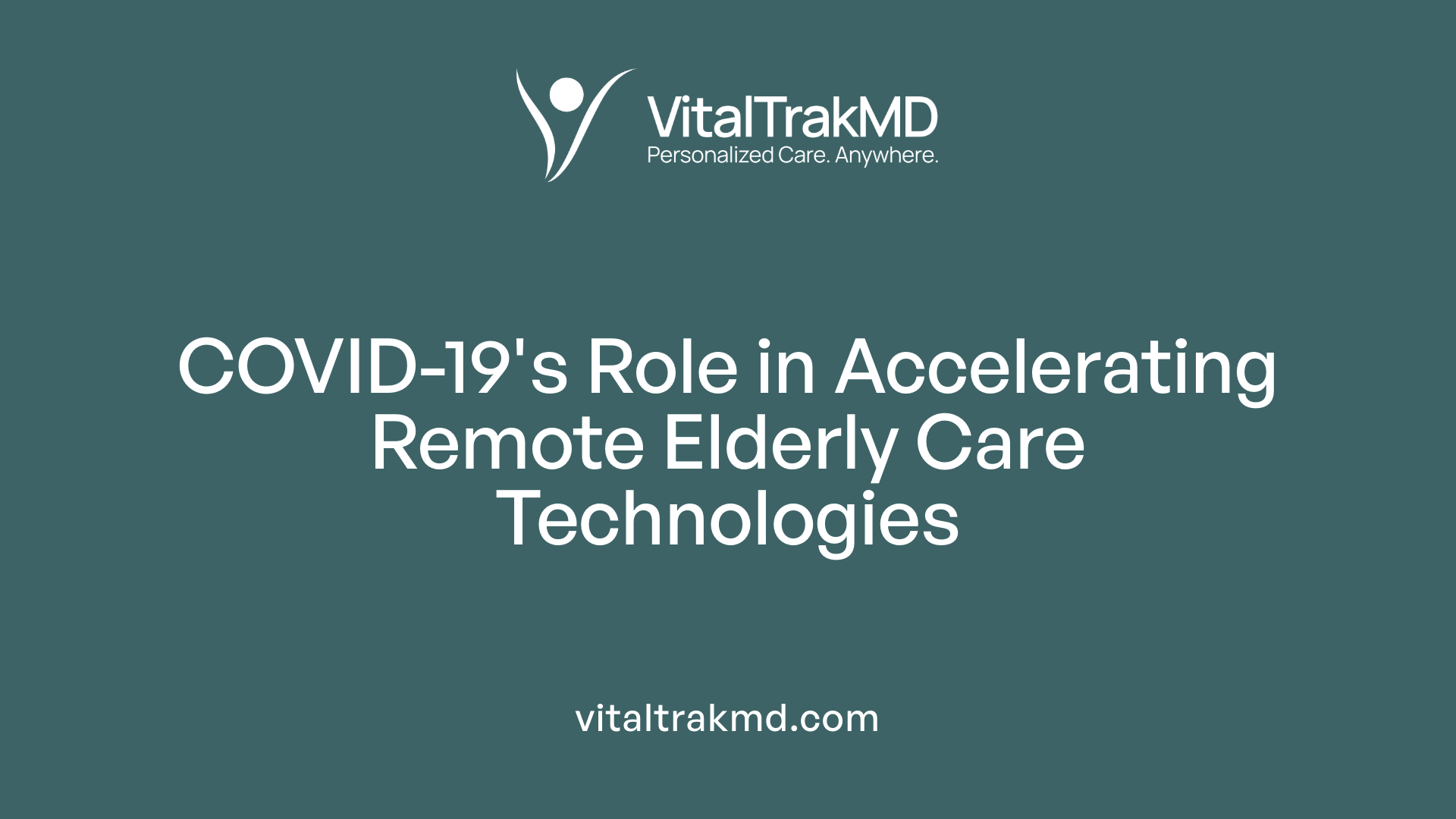
How has the COVID-19 pandemic influenced the adoption of remote health monitoring solutions?
The COVID-19 pandemic has been a catalyst for the widespread adoption of remote health monitoring systems, especially among elderly populations. With social distancing measures and restrictions on in-person healthcare visits, healthcare providers and patients alike turned to digital technologies to ensure continued access to care.
This crisis situation underscored the critical role of telehealth and remote monitoring tools in managing chronic diseases and supporting independent living for older adults, who are more vulnerable to COVID-19 complications. The urgent need for contactless, real-time health data collection accelerated the development and deployment of innovative solutions such as contactless sensors, digital biomarkers, and telemedicine platforms.
The pandemic also revealed existing vulnerabilities in digital infrastructure and highlighted the necessity for robust, secure, and easy-to-use technologies. Governments and healthcare organizations increased investments in digital health infrastructure and revised policies to facilitate remote consultations and continuous health monitoring.
Lessons learned
Key takeaways from this period include the importance of designing remote health monitoring solutions that are reliable, secure, and accessible to elderly users with varying levels of technological familiarity. Ensuring data privacy and security has become paramount to gain users' trust.
Furthermore, compatibility with existing healthcare workflows and integration with electronic health records (EHR) are crucial for seamless care continuity. The pandemic proved that resilient health systems depend on adaptable, scalable remote health solutions capable of supporting emergencies.
Overall, the experience has paved the way for more permanent implementation of telehealth and remote monitoring as standard components of eldercare, fostering a future where healthcare can be delivered effectively beyond traditional settings.
Digital and Contactless Monitoring Approaches
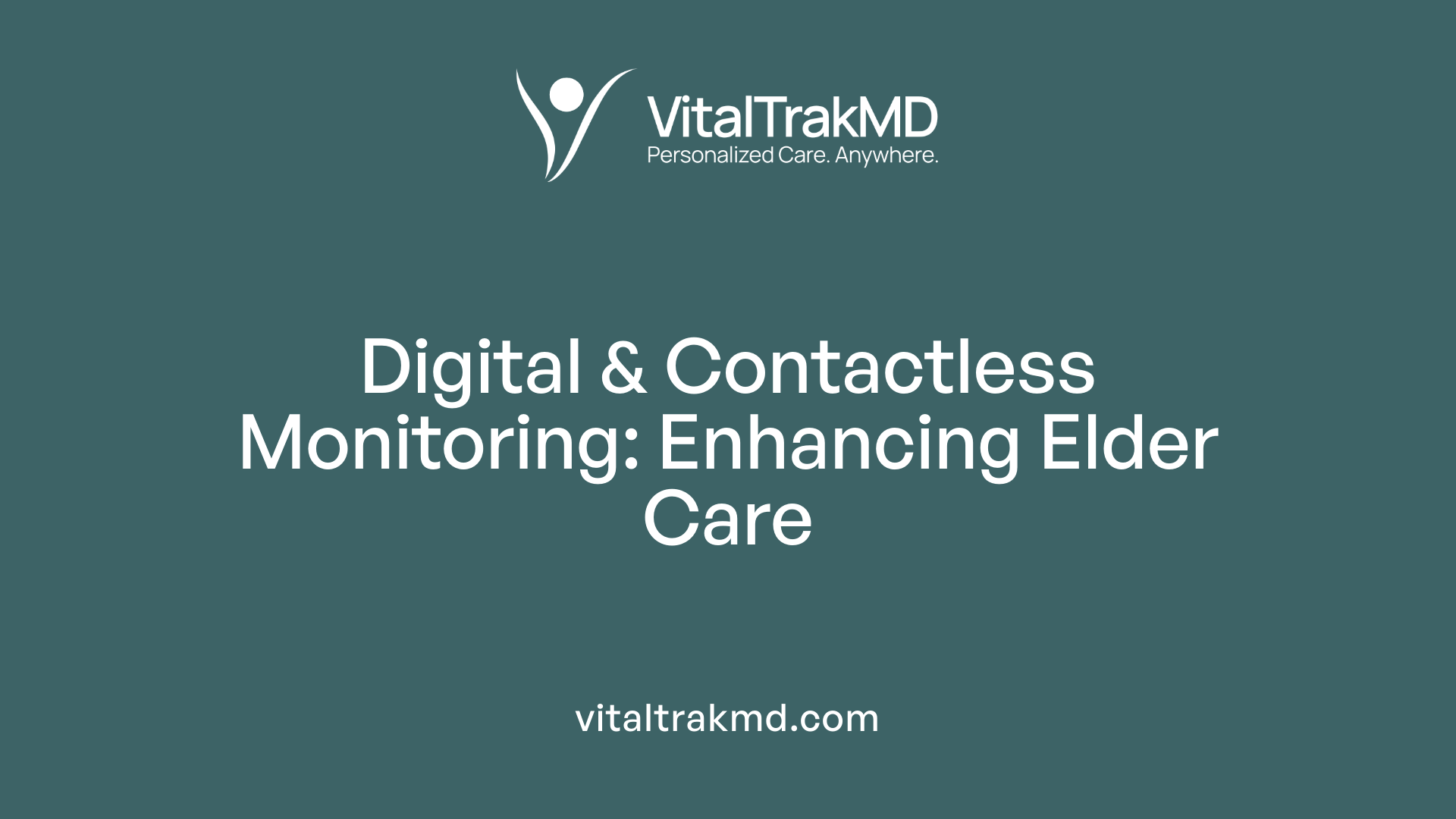
What are the innovative digital approaches to improve health monitoring in aging populations?
Advances in digital health technologies are revolutionizing how we monitor and care for elderly populations. Among the most promising are zero-interaction sensors and the digital exhaust concept, which enable continuous, unobtrusive health monitoring.
Zero-interaction sensors are contactless devices that collect data without requiring active participation from the elderly users. These sensors can monitor behaviors, physiological signals, and environmental conditions passively. For example, stationary sensors embedded in the home, wearable sensors, and vision-based systems gather a wide array of data such as movement patterns, sleep quality, heart rate, and activity levels. This approach overcomes common barriers related to usability and compliance, as older adults often face difficulties using complex or wearable devices.
Building on these sensors is the idea of a digital exhaust—a comprehensive set of digital measures derived from continuous sensor data. In recent research, a digital exhaust consisting of over 1260 measures has been developed. These measures capture diverse aspects of an individual's day-to-day activities, physical and mental health, and socio-environmental context. By applying machine learning algorithms to this rich data set, clinicians can generate Digital Clinical Outcome Assessments (COAs). These assessments have demonstrated high effectiveness in identifying age-related health issues such as fall risk, frailty, and early cognitive decline.
The integration of these innovative approaches supports a move toward more proactive, personalized care. Continuous monitoring provides real-time insights, enabling early detection of health deterioration and timely intervention. This approach not only enhances safety and independence for older adults but also helps reduce healthcare costs associated with hospitalizations and long-term care.
In summary, these digital and contactless monitoring strategies show considerable potential to address the challenges of sporadic and traditional health assessments. By providing unobtrusive, comprehensive, and long-term health insights, they pave the way for smarter, more responsive eldercare solutions—crucial for the growing aging global population.
Conceptual Modeling and Integration of Smart Health Systems
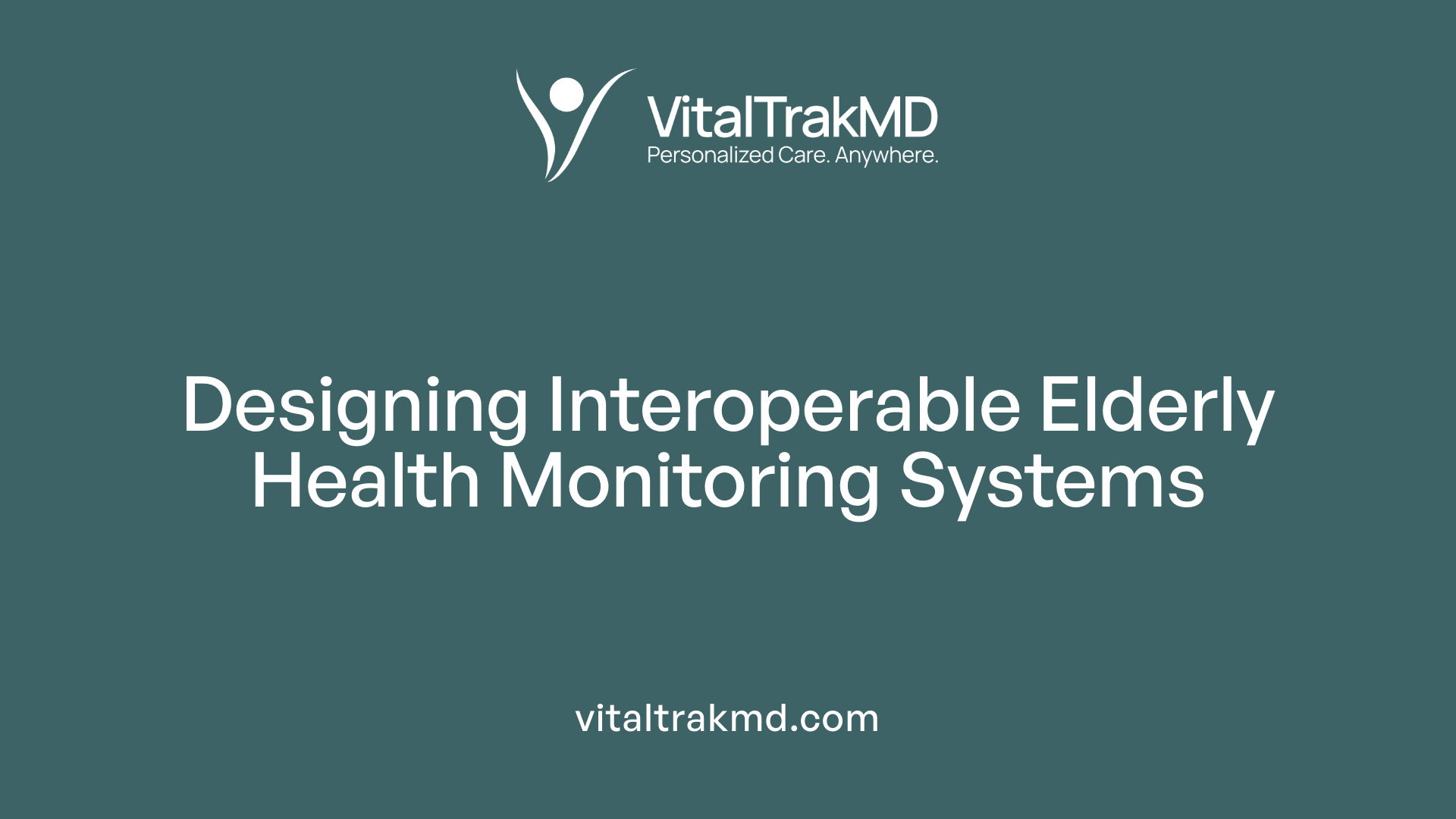
How can conceptual modeling support the development of comprehensive health monitoring systems?
Conceptual modeling plays a pivotal role in designing effective health monitoring solutions for the elderly. It offers a formal framework to accurately represent the intricate web of health-related factors, relationships, and requirements specific to aging populations. This structured approach helps developers and healthcare providers visualize and manage complex data flows and system functionalities.
A human-centered, holistic conceptual model extends traditional designs by prioritizing Activities of Daily Living (ADLs) and capturing multiple health dimensions such as physical, cognitive, emotional, and social aspects. This comprehensive perspective ensures that the system addresses all relevant facets of eldercare, promoting better health management and quality of life.
Moreover, these models support creating systems that are reusable and adaptable across diverse settings and cultures. For example, a model tailored for urban elderly in developed countries can be modified for rural, low-resource environments without a complete overhaul.
Case studies demonstrate the practical application of these models. One such scenario involves elderly participants performing shopping activities, where the model guides the collection and analysis of sensor data, activity recognition, and health status assessment. These real-world implementations show how formal representations facilitate seamless data integration and process management.
By providing a clear blueprint, conceptual models enable the development of interoperable, scalable systems. Developers can easily identify components, data exchange pathways, and functionalities—reducing complexity and fostering innovation. This structured approach ultimately leads to more reliable, user-friendly digital health ecosystems capable of meeting the growing demands of aging populations.
Long-term Care and Cost Implications of Aging

How does aging influence long-term care expenditure and healthcare costs?
The aging process plays a critical role in shaping long-term care costs, which tend to rise significantly as populations grow older. After the age of 60, healthcare expenditures typically increase sharply. This rise stems from the higher incidence of geriatric syndromes such as frailty, urinary incontinence, falls, delirium, and pressure ulcers, alongside chronic conditions like hypertension, arthritis, heart disease, cancer, and diabetes.
Older adults generally require more extensive medical attention, including assisted living, nursing home care, and various home-based support services. This increased demand places substantial pressure on healthcare budgets and public resources. The surge in hospitalizations, medication use, and need for specialized medical care further amplifies costs, making aging a major factor in the financial strain on health systems.
However, technological innovations like remote health monitoring and personalized care models offer promising solutions. These approaches help detect health issues early, potentially reducing hospital admissions and enabling timely interventions. Consequently, health systems can realize cost savings and improve care quality.
Nevertheless, adopting these technologies requires considerable initial investments. To offset costs, emphasizing cost-effective remote monitoring systems and integrating them into existing healthcare infrastructures are crucial.
In summary, as demographic shifts lead to increased elderly populations, health systems must balance the rising expenditure with innovative, efficient care strategies. By focusing on preventative and personalized care, it’s possible to alleviate some financial pressures while enhancing health outcomes for aging individuals.
Addressing Societal Attitudes and Digital Divide in Elderly Care
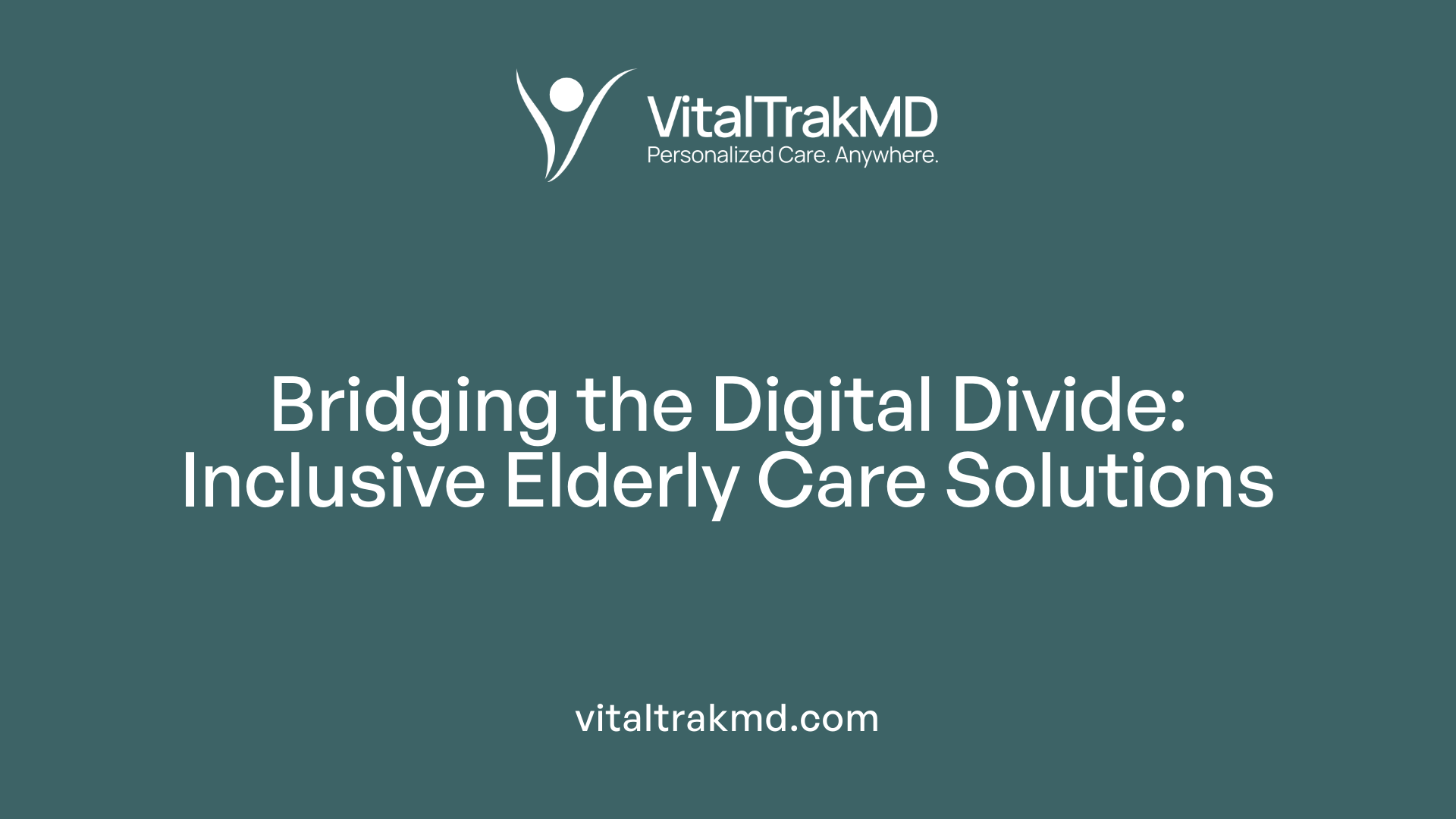
What societal and psychological barriers affect the adoption of health monitoring technologies among older adults?
The adoption of health monitoring and digital technologies by seniors faces a range of societal and psychological barriers that can impede their effective use.
One of the most significant obstacles is societal attitudes, including ageism and stereotypes that depict older adults as frail, dependent, or less capable of engaging with new technologies. These perceptions can foster reluctance both among seniors and within the broader community, leading to reduced acceptance of innovative healthcare solutions.
Psychologically, many older adults experience fear or apprehension towards technology. They often have low confidence in their ability to operate new devices or to understand digital interfaces, which exacerbates resistance. Privacy concerns also play a vital role; fears about data security and unauthorized access can discourage use.
The digital literacy gap is another major challenge. Older individuals with limited education or experience in digital skills may feel alienated or distrustful of digital health tools, viewing them as complex or intrusive. Such gaps can reinforce feelings of social isolation, making seniors less willing or able to adopt new health management solutions.
Cultural perceptions of eldercare significantly influence openness to digital interventions. In some communities, traditional caregiving, family involvement, and personal interactions are highly valued, and there may be skepticism or resistance to replacing or supplementing these with technology.
Overcoming these barriers involves multiple strategies. Public awareness campaigns can challenge stereotypes and promote positive views of aging and tech adoption. Developing user-centered, culturally sensitive devices improves usability and acceptance. Involving caregivers and family members in training and support enhances confidence and trust in these technologies.
Furthermore, educational initiatives focusing on increasing digital literacy among seniors are crucial. Demonstrating clear benefits and providing ongoing technical assistance can help build trust, reduce fears, and encourage wider adoption.
By addressing societal attitudes and bridging the digital divide, stakeholders can facilitate more inclusive, effective adoption of health monitoring technologies, ultimately improving health outcomes and quality of life for older populations.
Global Strategies and Lessons from International Examples

What can we learn from international approaches to managing aging populations with technology?
Different countries have adopted unique strategies to address the challenges posed by aging populations, offering valuable lessons in leveraging technology and policies.
Japan is a leader in elder care automation. Faced with a rapidly aging society and a shrinking healthcare workforce, Japan has extensively integrated robotics and smart home technologies into eldercare. Robots assist with mobility, companionship, and household tasks, while smart environments monitor health and safety. This scalable approach helps mitigate workforce shortages and enhances the quality of care, demonstrating how technological innovation can compensate for human resource gaps.
Germany employs integrated insurance schemes that streamline funding and coordination across health and social services. These schemes promote seamless care management, reduce fragmentation, and provide financial support tailored to the needs of older adults. This integrated model fosters better health outcomes and simplifies navigation through complex care pathways, emphasizing the importance of policy frameworks that support technological integration.
Sweden emphasizes 'aging in place,' focusing on community-based, home-centered services funded publicly. It invests in home modifications, assistive technologies, and proactive health interventions. This approach allows older adults to maintain independence, reduce hospitalizations, and improve life satisfaction. Sweden’s model underscores the significance of combining social services with accessible technology solutions tailored to cultural norms.
From these examples, we can extract several lessons:
| Lesson | Explanation | Example Countries |
|---|---|---|
| Invest in assistive technologies | Supporting independence and reducing care burdens | Japan, Sweden |
| Foster stakeholder collaboration | Ensuring cohesive and sustainable care systems | Germany, Sweden |
| Design culturally aligned systems | Respecting social norms enhances acceptance | Japan, Sweden |
| Promote policy innovation | Enabling scalable and integrated solutions | Japan, Germany |
These diverse international approaches demonstrate the importance of adaptable policies, innovative technologies, and cultural sensitivity in managing aging populations. Building on these lessons can help other nations develop sustainable, effective eldercare systems that utilize technology to improve quality of life and optimize healthcare resources.
The Road Ahead: Innovations and Policy Reforms
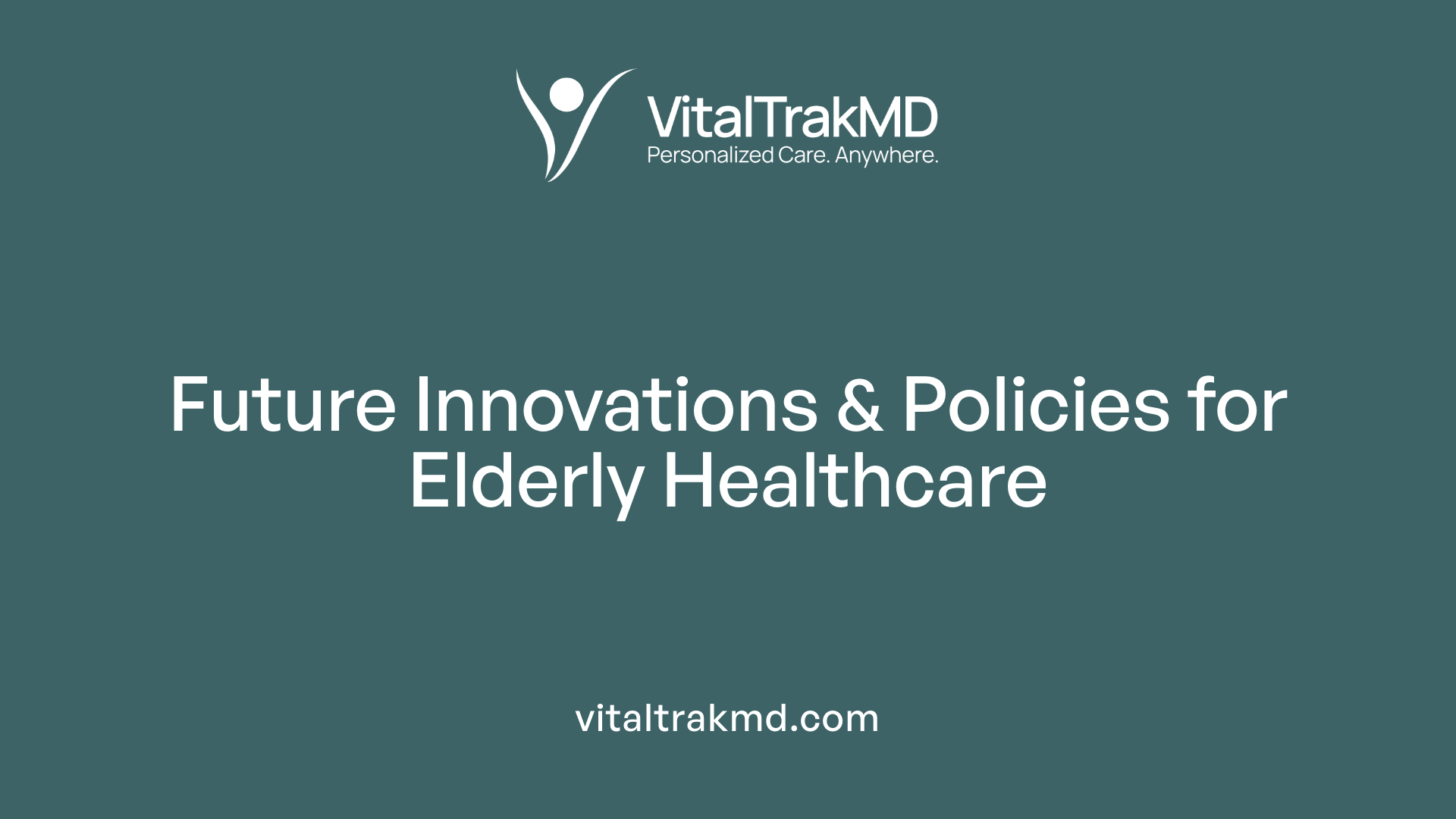
What future innovations and policy reforms are needed to improve age-related health monitoring?
Looking to the future, technological advancements will play a crucial role in transforming elderly healthcare. Innovations should strive to integrate artificial intelligence (AI), Internet of Things (IoT), and big data analytics into unified and easy-to-use health ecosystems. These systems would enable continuous, proactive, and personalized health management for older adults.
Developing adaptable and culturally sensitive devices and platforms is essential to enhance acceptance and usability across diverse populations. Customizable solutions that consider individual preferences, languages, and cultural norms can improve engagement and adherence. Additionally, addressing usability concerns—such as simplifying interfaces and ensuring accessibility—is fundamental.
Policy reforms are equally vital. They should promote the standardization and interoperability of health technologies, enabling seamless data sharing among devices, healthcare providers, and systems. Strengthening data privacy and security safeguards is necessary to build trust among users and protect sensitive information.
Regulatory frameworks need to establish clear guidelines for the ethical deployment of AI and data use, ensuring transparency and accountability. Incentivizing industry investment through subsidies, grants, and public-private partnerships can accelerate innovation and expand access.
Creating policies that foster equitable access to advanced technologies is critical to reducing disparities. This can involve subsidizing devices for low-income groups, supporting community-based programs, and ensuring inclusive design practices.
Furthermore, building comprehensive, lifelong health records that are portable across providers can facilitate early interventions and continuous care. Encouraging community engagement and social inclusion through digital literacy programs will empower older adults to make informed decisions about their health.
By aligning technological progress with proactive policies, societies can develop resilient and sustainable healthcare systems. These systems will not only address the complex health and social needs of aging populations but also uphold individual rights and promote dignity in later years.
Moving Toward a Holistic and Inclusive Elderly Health Surveillance
The challenges of sporadic health monitoring in aging populations are multifaceted, encompassing systemic, technological, operational, and societal barriers. Overcoming these requires concerted efforts in policy-making, technological innovation, and community engagement. Embracing contactless sensors, digital exhausts, and holistic modeling can dramatically enhance ongoing health assessment, ensuring early intervention and personalized care. International examples underscore the importance of integrated policies, technological adaptability, and cultural sensitivity. Future research and innovation must prioritize user-centered design, data security, and equitable access, fostering resilient healthcare frameworks capable of supporting older adults’ independence and well-being in the years ahead. By advancing comprehensive, inclusive health monitoring systems, we can address the complexities of aging with dignity, efficiency, and sustainability.
References
- The opportunities and challenges of using mobile health in elderly ...
- Healthcare on the brink: navigating the challenges of an aging ...
- Ageing and health - World Health Organization (WHO)
- Digital health for aging populations | Nature Medicine
- Benefits and barriers associated with the use of smart home health ...
- A systems approach towards remote health-monitoring in older adults
- Systematic design of health monitoring systems centered on older ...
- Aging populations and expenditures on health - ScienceDirect.com
Recent articles
Want to Feel Better and Live Healthier?
Join hundreds of patients taking control of their health with personalized care that fits their life – not the other way around.
Rated 4.8/5 by 32+ customers







